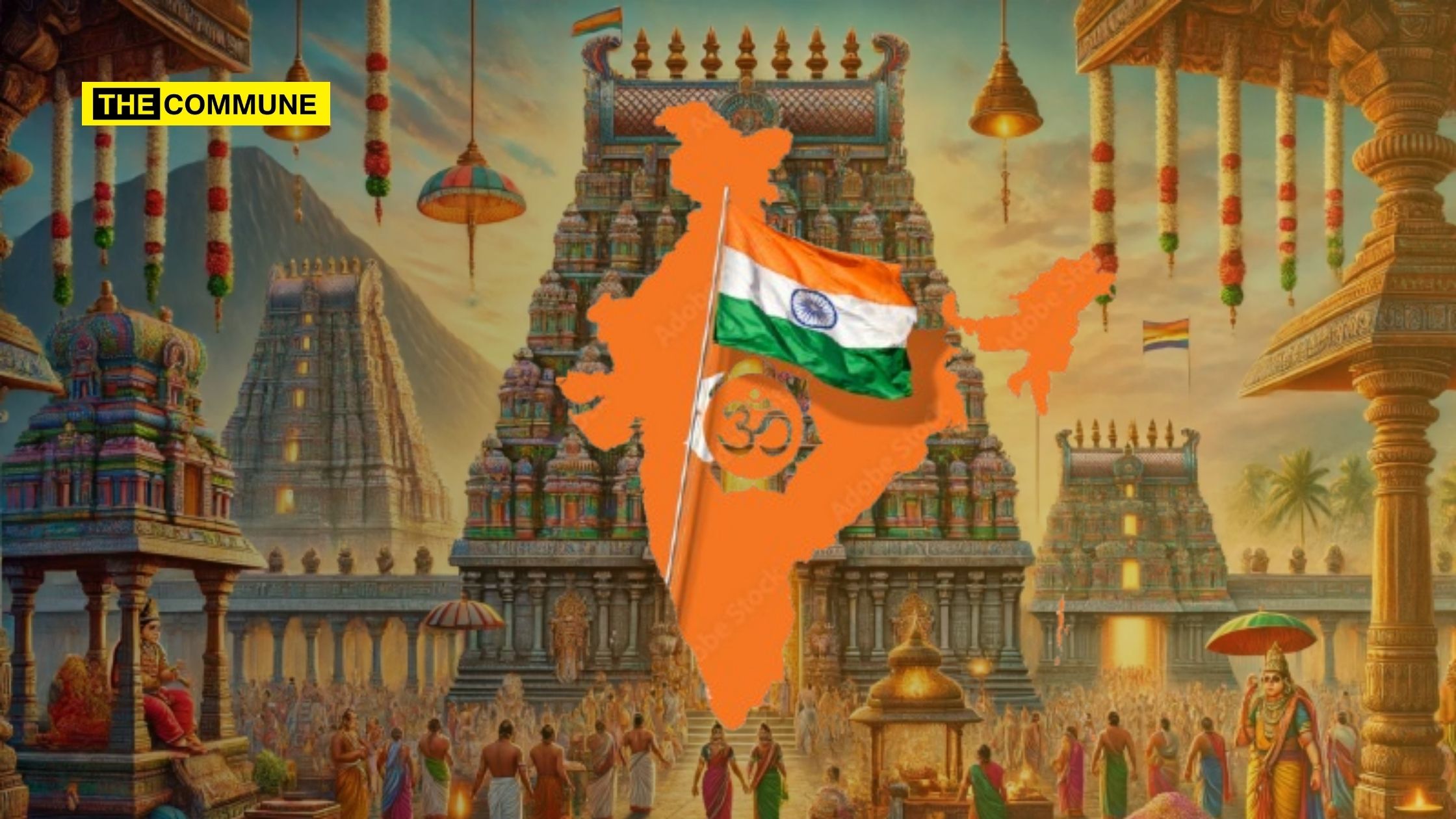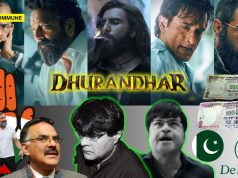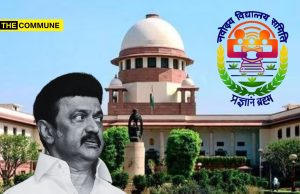
After centuries of surviving persecution under mleccha rule by restricting their faith to the boundaries of their individuals homes and shrines, Hindus are reclaiming their sense of being a sociopolitical community. This collective sense of being, which had existed since the Vedic era, had been rendered dormant first as an adaptation to oppression under foreign rule and then, after 1947, as a matter of the State’s social engineering endeavour of enforced secularisation of the Hindu social, economic, political, and even religious life. Yet, the rediscovery of the importance of community affairs, i.e. Hindutva, is recrystallising with Hindus being increasingly eager to articulate, advocate, and agitate for Hindu concerns and interests.
What began as a tempestuous collective upheaval of latent sentiment with the Ram Janmabhoomi movement and the removal of the invasive occupying structure erected over Bhagawan Rama’s birthplace has proven to stand the test of time, and the political effervescence of Hindutva did not die a death of senescence as the matter went on endlessly in the courts, but culminated with the BJP’s outright clinching of the majority mark in 2014 and 2019. The BJP’s miss in 2024 is more a result of a perceived betrayal of the Hindutva cause and inaction over Hindutva priorities—another first in contemporary Indian politics.
To understand how to make India more Hindu, a brief contextualisation of how India underwent de-indigenisation and pseudo-indigenisation where Hindutva as an idea was all but erased, is necessary. The clear concept of an outgroup, or a deplorable other to which Hindus have religious and social sanction to be antagonistic towards, has a long and consistent history. Whether the Dasyus of the Rigveda or the Mlecchas and Turushkas of the Puranas and Dharmashastras, the idea of a malevolent other, which is fit to face suspicion, boycott, and even dharmic violence, has been very clear. However, for the sake of protecting dharma itself, these concepts had to be necessarily kept in abeyance when Muslims came to occupy swathes of Bharat generation after generation. Thus, in the Bhakti era, even outright syncretism was employed as a protective mechanism to profess and propagate the core tenets of dharma while the land and people were under occupation; large temples, the fulcrum of all aspects of Hindu life, were all but wiped out in the northern half of the subcontinent, and hardly a temple exists in Kashi, which has not been razed at least once.
The absence of any noticeable collective feeling of Hindutva in our country for many decades following independence owes, in our opinion, to the almost complete deracination of the Hindu mind for over two centuries of colonisation by the British, preceded by aggressive destruction of our holy places by the Muslims. The post-1858 period was particularly unfortunate in this regard—Macaulay had done his work efficiently—and Hindus were degraded physically, mentally and morally with a small number allowed to ascend to lowly clerical positions in the Raj to ultimately form the future ruling elite of the brown sahebs. This enfeebled condition of the Hindus continued unfortunately after independence with a ‘secular’ constitution that placed the 80% majority community at a status lower than the 20% minority communities, and by this we mean largely the 15% Muslim community. This enforced secularisation where the majority is relegated to a position lower than the minority is unprecedented in the modern world, nay even in world history. Politically, this strange situation was the handiwork of the Congress Party, which is now clearly identified as a party for the Muslims—the modern day equivalent of the AIML of the pre-independence days when the INC (the previous incarnation of today’s Congress) and the AIML were at daggers drawn during the freedom struggle. Such are the vagaries of history.
Lenin’s dictum of controlling the “commanding heights of the economy”, which was readily adopted by the socialistic mai-baap State post-independence and is the bedrock of the political vapidity of today’s freebie culture, is no longer fully applicable today due to the structure of our modern economy. Thus, while overall economic growth and security should undoubtedly be an important matter for Hindus, the proper advancement of their interests needs a proper delineation of the goals they should work towards. To this extent, what is needed is for Hindus to ultimately control the “commanding heights of the society”, in other words, control over education, media, the legal system, and the Overton window.
The capture of these commanding heights requires a certain momentum, mental frame, and morale to achieve them in a reasonable timeline, which can be propped up with doable solutions that soothe Hindu sentiments as Hindu society reinvigorates itself and shapes itself into a proper political community. A few such initiatives are suggested as follows:
1. Temple Freedom: State control over temples, while constitutionally framed to permit temple entry, have ended up giving the godless complete control over institutions which were once the source of education, direction, and organisation for Hindu society. Such control is critical to keep temples from reclaiming this space, and permitting Hindus to have powerful social institutions which are autonomous from the State. With the scandal of beef fat being used to poison Hindus’ faith in Tirupati, and the ongoing theft of temple jewellery in many of southern India’s shrines, it is incumbent upon Hindus to demand a complete exclusion of the government, including the courts, from all matters concerning their temples. To this end, different temples may organise different modes of governance as test cases, with the general dictum being that overall supervision rests largely with an elected body of devotees, and daily management being the responsibility of the various classes of priests and servicemen which have traditionally undertaken upkeep of the temple.
2. Sanatana Dharma Samrakshana Board: Andhra Pradesh’s Deputy Chief Minister, Pawan Kalyan, has an important suggestion towards converting the various disparate initiatives into an organised, channelised movement. A Sanatana Dharma Samrakshana Board, which can aggregately take up Hindu causes such as social media account suspensions, lawfare, Hindu economic rights, temple protection etc., is necessary. It ought to be noted that the All India Muslim Personal Law Board was neither set up by the government nor was endorsed by it, and yet it successfully manages to act as a custodian of Muslim rights across all fields. Thus, an equivalent body that can coordinate Hindu efforts and be an umbrella pressure group needs to be set up, and it can and should be set up privately.
3. UCC: The greatest remnant of the special treatment advanced to Muslims in the country is their uncodified personal law, while Hindu personal law has been successively deracinated and distorted since the first attacks were made by the four Hindu family law acts passed soon after the independence. The time is right to end any such remnants of the premium accorded to minorities, and such law be necessarily framed as per the wishes and needs of the majority. It must be made abundantly clear that for anyone to live in Bhārat, they ought to submit to Bhāratiya law, and any wishes of Sharia ought to be met with calls of deportation.
4. Waqf: The third largest landowner in the country is a rapacious institution which has stolen Hindu land with little accountability. Entire villages, including temples, have been demanded by the Waqf board for its aggrandisement. The authors are inclined to only accord a lukewarm reception to the fireworks in the Joint Parliamentary Committee proceedings over the Waqf amendment bill. The Waqf is a continuation of the economic and geographical conquest waged over Hindus by aliens, and the only response warranted to such an affront is for its complete dissolution. The Waqf ought to be scrapped in its entirety, and all its properties distributed to Hindus as reparations for the millenia long indignities and destruction waged by invaders.
5. Citizenship: The fact that the government took years to notify and frame rules for the much-maligned Citizenship (Amendment) Act, 2019 (CAA), was a disgrace. Such a puzzling act of pusillanimity, if repeated, will only inflame Hindu scorn towards the current government. The need of the hour is twofold—the time limit for entrants to be eligible for citizenship, being December 31, 2014, has to be removed and the eligibility needs to be perpetual, perhaps even included in the Constitution. Secondly, and more importantly, the CAA needs to be reworded to unambiguously frame India as the natural home of Indic faiths and Indic faiths only, instead of framing it indirectly, even timidly, in the language of religious persecution. This will form the legal foundation for Hindu Rashtra in due course.
6. Reclamation of the Kshetram: Instead of shooting from the shoulders of the courts, reducing a non-negotiable question of Hindu faith to a petty land dispute, the law needs to be wielded to the fullest extent to enable Hindus to reclaim their temples. Kashi Vishwanath and Krishna Janmabhoomi are emblematic; however, till date there are 40,000 occupied and abandoned temples across the country, standing testament to the repeated assaults inflicted by mlecchas on Hindus. All of them need to be reclaimed not by pulverising Hindus into mendicants running before the courts against hordes which have scant regard for judgements, but by a matter of right being enforced through the might and majesty of the State, devoid of inhibitions. If a confrontation with the judiciary is what it takes, so be it. Likewise, a clear intention to retake parts of the country which are under Pakistani occupation is welcome, yet action on the ground is needed. Likewise, the idea that Pakistan, ipso facto, is an illegitimate and irrelevant entity, which is occupying India’s borders that naturally go up till the Sindhu, must be mooted and encouraged. These artificial nation state borders imposed on large sections of the world by the Euro-Amerisphere are unnatural and inefficient for many of us who inhabit civilisational states—they need to go.
7. Education: One of the most egregious missed opportunities post-2014 is to not make any fundamental changes to education. Education is a means of forging a national narrative, and instilling a sense of swayambodh as well as shatrubodh. A nationalistic, Hindu-oriented system of syllabi needs to be initiated, where invaders are no longer glorified, and while continuous genocide of the Hindus is not whitewashed, neither are Hindus painted as perpetual victims, with heroes who fought back such as Maharana Pratap, Gopal Patha, and Raja Kulchand being appropriately introduced. Our history, which is the history of each and every Hindu child, is a history of resilience and grace; a proper syllabus will concretely establish Hindus as a political community for generations to come.
Even with the disputes concerning Christian conversion in parts of south and central parts of India, no substantial and deep-seated disputes exist between Hindus and Christians. The problems in the northeast, including the anti-Hindu pogroms in the past, while requiring constant attention, are more than manageable. They are political in nature rather than religious. It is the Muslim community which continues to have a fraught relation with Hindus and Bhārat. Surprisingly, even discussing this problem has been criminalised under the new Bharatiya Nyaya Samhita, 2023, where questioning any religious, racial, language or regional group or caste or community’s allegiance to the Constitution or towards upholding the integrity or sovereignty of the country is a criminal offence—how such provisions can be enacted in a country where genocides against Hindus and secessionist movements founded specifically on religion continue to this day is a question left to the readers. Whether it is sar tan se juda, the consternation surrounding events in Lebanon and Palestine, or the insistence to wear the hijab, some clear, unambiguous, and frank assessments need to be made and collectively imposed amongst themselves by Hindus.
The path to the Hindu Rashtra will rest heavily on the ability of the Hindu vanguard in shifting the Overton window sufficiently, and thus rendering all meaningful opposition untenable. This goes back to the idea of controlling the commanding heights of the society. When this occurs, institutions and entities which stand in opposition will be rendered either nugatory or irrelevant, and a de facto Hindu Rashtra will be able to usher in a de jure transformation. To take a page from Sun Tzu, to subdue the enemy without fighting is the acme of skill.
Once we feel Hindu, and our myriad individual feelings coalesce and synergise into a massive collective feeling, the Overton window will shift automatically and the Supreme Court, BJP, Modi etc become irrelevant. Hindu Rashtra needs to be achieved de facto before it is a reality de jure.
Gautam Desiraju is Professor Emeritus in the Indian Institute of Science, Bengaluru.
Deekhit Bhattacharya is an Associate in Luthra & Luthra Law Offices, New Delhi
Subscribe to our Telegram, WhatsApp, and Instagram channels and get the best stories of the day delivered to you personally.




